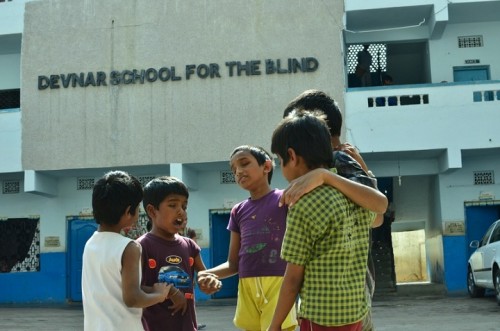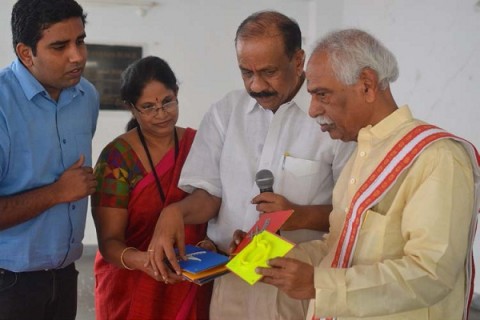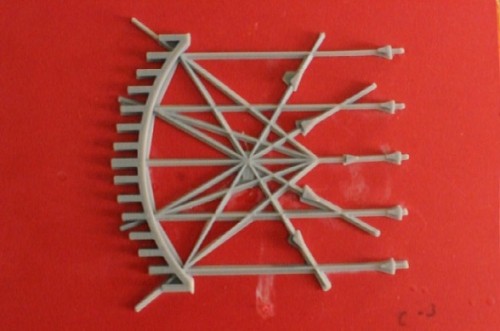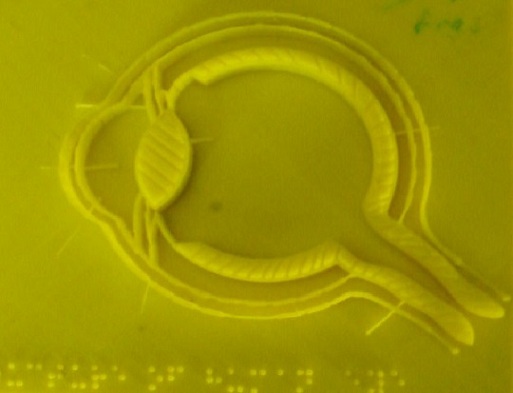“The only thing worse than being blind is to have sight but no vision” this thought-provoking quote by Helen Keller is a testament to the fact that visionary companies should look beyond financials and create long lasting products & services that have immense positive impact on the society.
Taking this quote to heart, Prudhvi Reddy, co-founder of think3D, India’s largest 3D printing platform wanted to deploy this amazing technology to create a positive impact on the needy. Upon discussing the idea with Raja Sekhar Upputuri, his business partner at think3D, they both came up with the idea to create 3D printed visuals for the aid of visually-impaired children. In a matter of weeks, we approached Dr. Saibaba Goud, who’s among the leading ophthalmologist and also one of the co-founders of Devnar Foundation for the Blind, and proposed our idea to elicit his views on the same. A mere impairment of the vision shouldn’t be a hindrance to a child’s growth towards a potential future and this thought inspired Mr. Goud to co-found Devnar Foundation and become an instrument in creating notable differences in the lives of several children with visually impairment for decades.

Prudhvi said, “We explained him about 3D printing technology and how it can be used to create 3D visual aids. He became very interested in this whole project. He assigned a faculty member as our point of contact for this project and supported us all through”.When we had interactions with the some of the visually-impaired students of 10th standard and also the faculty members we learnt that the students were finding it difficult to understand the concepts of Physical Science and Life Sciences. Prof. R. Parameshwaran, a senior Physical Science faculty at Devnar Foundation said “For normal children, we can easily explain by drawing a picture on the board. They can see and visualize it. But blind children can visualize only by touch. We do have few visual aids in the laboratory. Those are bulky, non-portable and are prone to damage easily. Moreover, creation of such visual aids is an expensive proposition. So, we are commissioning such models for very important concepts like Blood Circulation System. If we can get highly portable and durable models at low cost, that will be a huge benefit for these students”.


After the meeting it was clear to us that a visual aid, that can explain the 2D diagram in the books, may be an effective solution to this problem. So we decided to digitize and create 3D models of all diagrams in high school science textbook. The entire team spent around 45 days designing and 3D printing various physics concepts like “Light Ray”. Once the printing work is done, we took the models to the school for demonstration to the students and the teachers. Later on, the demo turned out to be pretty successful. The teachers and the students loved those portable visual aids. Those are small, easy to handle and highly durable.Upon giving one light ray model to one high school students, he says “This is a 3D printed model which is made of plastic I think. If we touch and see this for many times also this will not spoil, and, it’s seems to be a long-lasting one”. Another student added, “This is a light ray hitting the lens and reflecting back. I can visualize which ray is coming from the right, which one from the left, which one is parallel and which one is perpendicular. This model helped me visualize it very well”Overwhelmed by the response, we had another idea to do the same with the Biology subject too. “I was really surprised to see that one guy could touch the 3D printed human eye anatomy and could instantly recognize the cornea.” says Prudhvi

Our small initiative has made the lives of these blind students a little easier. We believe this has given a small support to their passion and their dreams. “Initially it was a bit difficult for me to explain these blind children how the ray of light passes straight through the lens, but now with these visual aids it has become much easier.” A teacher of Devnar Foundation said.
In words of Raja Sekhar Upputuri, “3D printing is making impossible possible. 3D printed visual aids are a perfect example of how this technology can be deployed for the betterment of society. And this technology is still in its very early stages of evolution. We are all excited to be part of this revolution and we continue to explore ways to deploy this technology to solve the problems.”
For centuries people who had been living with some sort of impairments have set examples where they proved that any physical challenge isn’t a challenge at all. What all it required for them to change their destiny is a will to do it and such deep knowledge has been resonating across time ever since.
About 3D Printing
3D printing is the process of making three dimensional solid objects from digital model by depositing material layer by layer through a computer controlled movement mechanism. These objects can be of any shape, size. The fact that one can create objects directly at one’s workplace makes this technology highly disruptive and revolutionary. To know more about 3D printing, click here.
About think3D
think3D is co-founded by Raja Sekhar Upputuri, an MBA graduate from China Europe International Business School, Shanghai, China and Prudhvi Reddy, who did his from MBA from Indian Institute of Management, Kolkata, India, in July 2014. The company’s vision “3D printing for all” thrives the team to relentlessly move forward and set a strong foundation of 3D printing on the Indian shores. The company, since its inception in June, 2014, had been an exponent in creating mass awareness on 3D printing and contribute to this global movement of change. Head-quartered at Hyderabad, India, within a short span of time, this knowledge hub had been successful in creating a benchmark by providing world-class services to many corporate giants, educational institutions and also to the common people. Visit www.think3d.in to find more information
About Devnar Foundation for Blind
Devnar Foundation for Blind is the leading school for blind children in India. The school was started in 1992 with 4 students in rented house. Within a span of 18 years, the school has grown to the present stature with 400 students, housed in a three storeyed building owned by the Foundation. Devnar Foundation for Blind provides all the necessary tools to bring out the best in the students. Their abilities outshine their disability to such an extent that the visitors leave the school humbled by the unconquerable spirit, perseverance and performance of the students. You may visit their website to find more information.